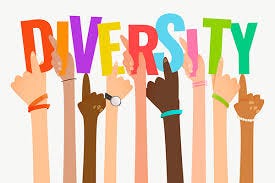My Medical School Class of 1978 Was Diverse
Diversity is about more than skin color, gender, or ethnicity
There is really no specific moment when the ideology of diversity, equity, and inclusion (DEI) arose seemingly de novo into the American consciousness. The precepts behind DEI can be traced back to the civil rights movement of the 1960’s. On the surface, who can argue against diversity, equity, and inclusion? Each, individually, is desirable and a laudable goal for all. Taken as a phrase, however, DEI is a dog whistle for critical race theory and represents the application of neo-Marxist critical race theory into every aspect of our culture and institutions.
DEI in its present form is recent phenomenon, pre-dating the Covid pandemic by a few years. It is implicitly and explicitly woven into the writings of Ibram X. Kendi, Ta Nehisi Coates, Robin D’Angelo, and Nikole Hannah-Jones, all of which came out from 2018-2021. All posit that systemic racism is the root cause of nearly all cultural, social, financial, health, and employment disparities. The proposed solution to this is reverse racism to elevate oppressed minorities at the expense of their white male oppressors.
Diversity demands proportionate representation according to identity groups. These used to be called quotas, but quotas are prohibited by the Equal Rights Clause of the 14th Amendment to our Constitution. According to DEI, however, if blacks make up 13% of the population, then their underrepresentation anywhere always signals underlying discrimination. The same with other groups. This presents some dilemmas. Representation of black, Hispanic, and white players in the NBA does not mirror their proportion of the population. Young white males die in combat at much higher rates than their proportion in the population. Only about 5% of surgeons in the US are black. Does all of this reflect discrimination?
Much has been made of the lack of diversity in our medical schools. Curious, I went back to my yearbook for the University of Miami Class of 1978.
My class consisted of 160 students. 140 of us were regular students in the four-year program. The other 20 were in an experimental program which compressed medical school for those with PhD’s in any subject to 2 ½ years as an effort to ease the chronic shortage of physicians. The racial/ethnic breakdown was as follows:
White males- 120 (75%), white females- 14 (12%), Hispanic males- 14 (12%), Hispanic females- 3 (2.5%), Asian males- 6 (5%), and black males- 3 (2.5%).
By contrast, my daughter graduated from the same medical school, Class of 2018. While I cannot give a precise demographic breakdown, I know her class was over 50% female and the diversity of other racial/ethnic groups was substantially greater in every category. Statistically, white males now make up less than 30% of medical students. Percent enrollment of blacks and Hispanics have risen significantly, to 11.3% and 12.7%, respectively, nearly their numbers in the general population.
The numbers, however, do not really tell the story. When you begin to parse diversity, it goes beyond race and ethnicity. The more specific you are in defining people, the more the group trends to a single individual.
I remember looking around me in the first weeks of medical school and marveling at the diversity of my classmates. Among the whites were Greeks, Italians, Scandinavians, and those like me who were of mixed ethnicity (I am half Brazilian on my mother’s side). There were Christians, Jews, and even a Buddhist. We had a group of older students that we dubbed the “geriatric squad”, which included a former professional ballerina, a decorated Marine Corps fighter pilot with multiple tours in Vietnam, a pharmacist, and a career housewife and mother of three grown children. The youngest student in my class was the son of a successful New York attorney and drove a Rolls Royce to school. Another paid for his schooling by writing cheap, boilerplate pornographic paperbacks. Several of us were on military scholarships (Navy for me). We had a family of three- biochemist father, mother, and daughter, who all went to medical school together. There was nothing homogenous about us.
Most of us were selected for excellent academic performance and good scores on our Medical College Aptitude Test. Yes, there were a few that were selected based on things like race and gender. At least two that I know of were held back after the first year of medical school. One eventually dropped out. The other went on to successfully complete medical school and became a family doctor.
The focus on race in DEI ignores the marvelous diversity of people outside of immutable characteristics like race, gender, and ethnicity. Pushing DEI and proportionate representation too often results in a lowering of standards to meet these goals. In medicine, excellence should trump everything.
Richard T. Bosshardt, MD, FACS, Senior Fellow at Do No Harm, Founding Fellow at FAIR in Medicine.
My book is now available on Amazon as an eBook or paperback. It is a rare, painfully honest, entertaining, and informative look into my world for those with any curiosity about plastic surgery and what it takes to become a plastic surgeon.







Getting a great education from you, Doc.
Excellent article Rick! Your summation is indisputable, especially in our fields. Actually, I cannot think of any job or career that could possibly benefit from racism and the discouragement of merit and excellence.